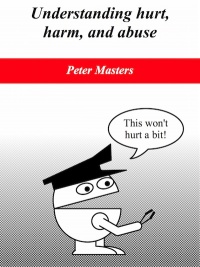 |
Peter Masters |
Peter Masters |
|
|
|||||
| About me | About this site | My books | |||||||
Understanding hurt, harm and abuse

|
| People skills and shiny objects |
| A download for Kindle |
| Author: Peter Masters |
| Visit the article's page at Amazon.com |
The boundary between BDSM relationships or BDSM play which are healthy and positive and those which are negative or unhealthy can be hard to draw because the more common indicators of abuse, such as beating, bruising, and humiliation, are par for the course in BDSM. This article explores the difference between hurt, harm, and abuse and identifies characteristic of each and ways of recognising when the line between hurt and harm has been crossed.
SampleWhen we’re talking about BDSM, then sticking needles in your partner, carving designs into their flesh with a scalpel, or dangling them upside down and naked from a beam and beating their backside with a heavy cane, can all be part of a good evening’s fun. But these also have the potential to go wrong. Not in the sense of an accident occurring—which is always a possibility—but instead when they stop being fun or satisfying or rewarding. The thing which makes BDSM a positive experience is the state of mind of the people involved. What happens when that state of mind isn’t there, or when it goes away mid-scene? And why do activities like the ones I mentioned above—which are clearly going to involve a lot of pain, a fair amount of discomfort, and a great deal of effort—count as profound, rewarding, and intimate experiences between two people in the first place? More particularly, how can we tell when these things which we do are good, and how can we tell when they turn bad and the hurt becomes harm? ... |